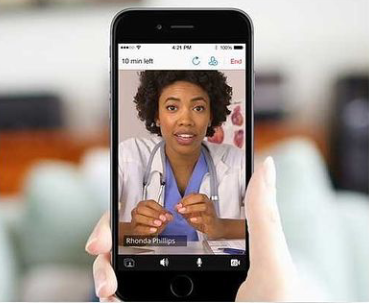 In an era defined by technological innovation and interconnectedness, telemedicine has emerged as a transformative force in healthcare delivery, offering new avenues for remote consultation, diagnosis, treatment, and monitoring. With advancements in digital communication, mobile technology, and virtual care platforms, telemedicine has the potential to expand access to healthcare services, improve patient outcomes, and enhance the efficiency of healthcare delivery systems. In this comprehensive exploration, we delve into the multifaceted realm of telemedicine, examining its evolution, applications, benefits, challenges, and future directions.
In an era defined by technological innovation and interconnectedness, telemedicine has emerged as a transformative force in healthcare delivery, offering new avenues for remote consultation, diagnosis, treatment, and monitoring. With advancements in digital communication, mobile technology, and virtual care platforms, telemedicine has the potential to expand access to healthcare services, improve patient outcomes, and enhance the efficiency of healthcare delivery systems. In this comprehensive exploration, we delve into the multifaceted realm of telemedicine, examining its evolution, applications, benefits, challenges, and future directions.
The Evolution of Telemedicine: From Concept to Reality
The concept of telemedicine traces its roots back to the early 20th century, with pioneers in telecommunication and medicine envisioning the use of telegraph and telephone systems to deliver healthcare services remotely. Over the decades, technological advancements, including the advent of videoconferencing, digital imaging, and broadband internet, have accelerated the development and adoption of telemedicine solutions. Today, telemedicine encompasses a broad spectrum of remote healthcare services, spanning teleconsultation, telemonitoring, telepsychiatry, and telesurgery, among others.
 Applications of Telemedicine in Healthcare
Applications of Telemedicine in Healthcare
Telemedicine has diverse applications across various specialties and settings, facilitating access to care, improving care coordination, and enhancing patient engagement. Key applications include:
Teleconsultation: Teleconsultation enables patients to connect with healthcare providers remotely via videoconferencing, telephone, or secure messaging platforms. Virtual consultations allow for real-time assessment, diagnosis, and treatment planning, eliminating geographical barriers and reducing the need for in-person visits.
How To Prevent Cavities Naturally: EFFECTIVE STRATEGIES [2024]
NEW: Cosmetic Dentistry Insurance, What’s In and What’s Out, Important background Information[2024]
The Luxury Toothpaste Trend: Worth the Price Tag? (2024 INSIGHTS)
Hidden Costs of Oral Health Neglect and How to Avoid Them (2024)
Telemonitoring: Telemonitoring involves the remote monitoring of patient vital signs, symptoms, and health metrics using connected devices, wearable sensors, and mobile apps. Healthcare providers can track patient progress, detect early warning signs, and intervene proactively to prevent complications or exacerbations of chronic conditions.
Telepsychiatry: Telepsychiatry delivers mental health services, including assessment, counseling, and medication management, through remote videoconferencing platforms. Telepsychiatry expands access to mental health care, particularly in underserved areas or populations with limited access to traditional psychiatric services.
Benefits of Telemedicine: Improving Access, Quality, and Efficiency
Telemedicine offers a myriad of benefits for patients, healthcare providers, and healthcare systems alike, including:
Expanded Access to Care: Telemedicine enables patients to access healthcare services remotely, overcoming geographical barriers, transportation challenges, and long wait times for appointments. Rural residents, homebound individuals, and those with mobility limitations can benefit from virtual consultations and remote monitoring, ensuring timely access to care.
Enhanced Care Coordination: Telemedicine facilitates seamless communication and collaboration among healthcare providers, enabling multidisciplinary care teams to coordinate patient care more effectively across different specialties, settings, and geographic locations. Care coordination platforms and telehealth networks streamline referral processes, facilitate information exchange, and improve continuity of care for patients with complex medical needs.
Improved Patient Engagement: Telemedicine empowers patients to take a more active role in managing their health and participating in their care decisions. Virtual consultations, patient portals, and remote monitoring tools facilitate communication between patients and providers, fostering greater engagement, adherence to treatment plans, and self-management of chronic conditions.
Challenges and Considerations in Telemedicine Implementation
Despite its potential benefits, telemedicine faces several challenges and considerations that must be addressed to maximize its impact and sustainability. Key challenges include:
Technological Barriers: Access to reliable internet connectivity, digital devices, and telecommunication infrastructure remains uneven, particularly in rural and underserved areas. Technological disparities and digital literacy gaps can hinder patient access to telemedicine services and exacerbate healthcare inequities.
Regulatory and Reimbursement Issues: Telemedicine is subject to regulatory frameworks, licensure requirements, and reimbursement policies that vary across states and countries. Legal and regulatory barriers, such as restrictions on telemedicine practice, interstate licensure compacts, and limitations on reimbursement for virtual care services, can impede telemedicine adoption and scalability.
Privacy and Security Concerns: Telemedicine platforms and digital health technologies raise privacy and security concerns related to the protection of patient health information, data breaches, and compliance with healthcare privacy regulations, such as the Health Insurance Portability and Accountability Act (HIPAA). Ensuring data privacy, encryption, and secure transmission of health data is essential for maintaining patient trust and regulatory compliance in telemedicine.
 Future Directions: Innovations and Opportunities in Telemedicine
Future Directions: Innovations and Opportunities in Telemedicine
As telemedicine continues to evolve, several emerging trends and innovations hold promise for expanding its reach, enhancing its capabilities, and addressing existing challenges. Key areas of focus include:
Virtual Reality (VR) and Augmented Reality (AR): VR and AR technologies are transforming telemedicine by providing immersive, interactive experiences for medical education, surgical simulation, and patient engagement. Virtual reality platforms enable remote training for healthcare professionals, immersive patient education, and virtual rehabilitation for individuals with physical or cognitive disabilities.
Artificial Intelligence (AI) Integration: AI-driven algorithms and machine learning models are enhancing telemedicine platforms with advanced capabilities for data analysis, image recognition, and predictive analytics. AI-powered chatbots, virtual assistants, and decision support tools streamline workflow, automate administrative tasks, and provide clinical insights to healthcare providers during virtual consultations.
Remote Patient Monitoring (RPM) Devices: Remote patient monitoring devices, including wearable sensors, smartwatches, and home health monitors, are becoming increasingly sophisticated and user-friendly, enabling continuous tracking of vital signs, medication adherence, and disease markers. Remote monitoring solutions empower patients to monitor their health in real-time and share data with healthcare providers for proactive management of chronic conditions and early intervention.
Telemedicine represents a paradigm shift in healthcare delivery, offering a transformative approach to patient care that transcends geographical boundaries and traditional healthcare settings. By harnessing the power of digital technology, communication networks, and data-driven insights, telemedicine has the potential to revolutionize healthcare access, improve patient outcomes, and enhance the efficiency of healthcare delivery systems. As we navigate the evolving landscape of telemedicine, it is essential to address technological, regulatory, and ethical challenges while embracing innovations that advance the field and promote equitable access to high-quality healthcare for all. With continued innovation, collaboration, and commitment to patient-centered care, telemedicine has the power to reshape the future of healthcare delivery and improve the health and well-being of individuals and communities worldwide.
 Applications of Telemedicine in Healthcare
Applications of Telemedicine in Healthcare
 Future Directions: Innovations and Opportunities in Telemedicine
Future Directions: Innovations and Opportunities in Telemedicine